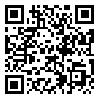Volume 4, Issue 4 (12-2022)
Tabari Biomed Stu Res J 2022, 4(4): 48-52 |
Back to browse issues page
Download citation:
BibTeX | RIS | EndNote | Medlars | ProCite | Reference Manager | RefWorks
Send citation to:



BibTeX | RIS | EndNote | Medlars | ProCite | Reference Manager | RefWorks
Send citation to:
Karimi Z, Shokrzadeh M, Abbasi A, Sharifi V. Extraction of Imidacloprid from Human Biological Samples Using the QuEChERS Method and Its Determination by High-Performance Liquid Chromatography. Tabari Biomed Stu Res J 2022; 4 (4) :48-52
URL: http://tbsrj.mazums.ac.ir/article-1-3783-en.html
URL: http://tbsrj.mazums.ac.ir/article-1-3783-en.html
1- Department of Toxicology, Faculty of Pharmacy, Mazandaran University of Medical Sciences, Sari, Iran.
2- Legal Medicine Research Center, Legal Medicine Organization, Tehran, Iran. Department of Community Medicine, Sari Branch, Islamic Azad University, Sari, Iran.
3- Legal Medicine Research Center, Legal Medicine Organization, Tehran, Iran.
2- Legal Medicine Research Center, Legal Medicine Organization, Tehran, Iran. Department of Community Medicine, Sari Branch, Islamic Azad University, Sari, Iran.
3- Legal Medicine Research Center, Legal Medicine Organization, Tehran, Iran.
Abstract:
| A Simple and fast QuEChERS method has been applied for extraction of imidacloprid from human biological samples. Imidacloprid the was extracted from blood and liver of a deceased body admitted to the legal Medicine of Mazandaran. Factors affecting the extraction procedure such as type of the organic solvent and its volume, amount of salt, amount of sorbent, and pH were examined and optimized for the maximum recovery. The appropriate condition for extraction of imidacloprid was as follows: sample pH=5, 3mL of acetonitrile, 0.1 g of NaCl, and 0.4 g of MgSO4. The maximum recovery of imidacloprid at these conditions was 96%. The LOD and LOQ were 0.02 and 0.06 ppm, respectively. Finally, the blood and liver samples were extracted under the appropriate condition and determined using HPLC which is equipped with a photodiode array detector. The amounts of Imidacloprid in blood and liver samples were 11 and 1.8 ppm, respectively. |
Send email to the article author
| Rights and permissions | |
 |
This work is licensed under a Creative Commons Attribution-NonCommercial 4.0 International License. |







